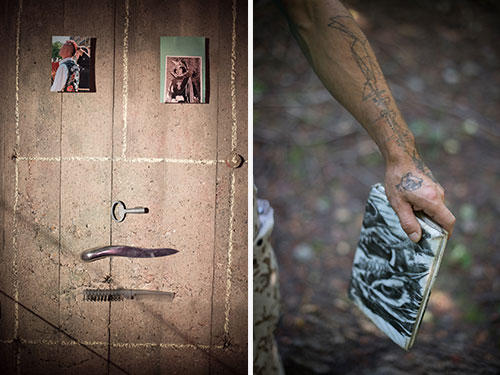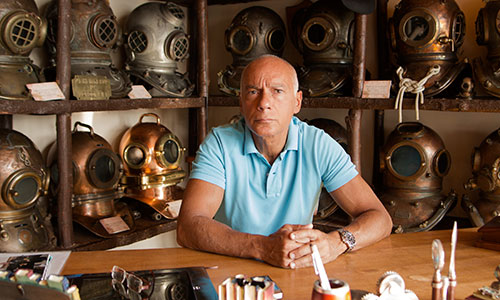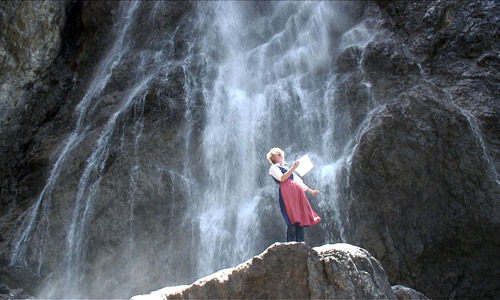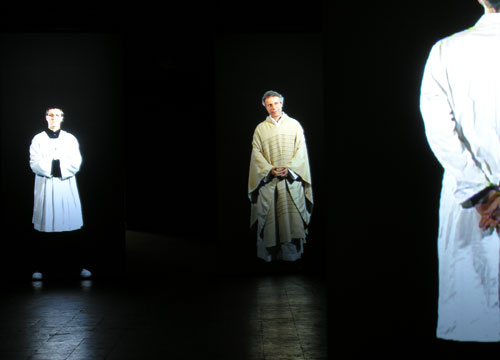Johanna Sunder-Plassmann
Zwischenwelt – In progress
Documentary, 90 min, in collaboration with director Tama Tobias-Macht, 2021-24
It is a woman's world - a cocoon between past and future. The documentary "Zwischenwelt" portrays a women's shelter and uses an artistic strategy to tell the stories of the residents. Cinematographer: Sophie Maintigneux, Producer: corso film.
Menschen Hautnah – Die zweite Chance
Documentary, 45 min, in collaboration with director Tama Tobias-Macht, 2021/22
Udo was a burglar for most of his life and spent many years in prison. For a few years he fought his way back to a middle-class life. The job he is taking now is a victory for Udo. After breaking into so many apartments, he has now become the janitor of a high-rise building in Cologne. Cinematographer: Marie Zahir, Producer: Thurnfilm.
Screenings
- 2022 public TV Channel WDR
- 2022 public TV Channel ARD (30min version)
- https://menschen-hautnah/der-einbrecher-und-das-hochhaus
- https://echtes-leben-hausmeister-mit-vergangenheit


draußen
Documentary, 80 min, in collaboration with director Tama Tobias-Macht, 2015-18
The film explores the turbulent lives of homeless persons in Cologne, Germany. Through their personal belongings the homeless share with the viewer their memories and emotions, and provide insight into the secrets of survival on the street. In the luminesence of night, their sleeping spaces filled with their collections of personal artifacts, are evocative of museum showcases.
Director and Editor: Tama Tobias-Macht, Johanna Sunder-Plassmann, Cinematographer: Sophie Maintigneux, Sound recording: Filipp Forberg, Production management: Igor Novic, Producer: unafilm, Financing: Film- und Medienstiftung NRW, ARTE TV.
Screenings
- Premiere: Berlinale Filmfestival 2018, nominated for: Glashütte-Original Documentary Award, Kompass-Perspektive Award, Grimmepreis 2019
- Numerous international festivals, Cinematic exploitation nationwide


Blending In
Documentary, 10 min, in collaboration with director Tama Tobias-Macht, 2016/17
Homeless, Ionel sleeps on a bench in Cologne Airport. He earns more, pocketing bottle deposit money, selling newspapers and begging than in a regular job back home in Romania.
The film is part of the German-Israeli project OUT OF PLACE – directors from both countries produce 10 short portraits of individuals living ‘outside’ society.
Director and Editor: Tama Tobias- Macht, Johanna Sunder- Plassmann, Cinematographer: Sophie Maintigneux, Sound recording: Filipp Forberg Production management: Igor Novic, Production: One Two Films GmbH Berlin, Funded by Gesher Multicultural Film Fund, Israel. European Union.
Screenings
- 2017 Jewish Film Festival. Berlin, Germany.
- 2017 DocAviv, International Film Festival. Tel Aviv, Israel.


Istanbul Collecting
Documentary, 75 Min., 2014
This film tells the story of the creation of The Museum of Innocence by the Turkish author and Nobel laureate Orhan Pamuk in the neighborhood of Çukurcuma in Istanbul. „Istanbul Collecting“ follows the meticulous artistic process involved in setting up the museum and shows the work and imagination of Orhan Pamuk and his team in realizing his literary ideas visually and freely in the space. At the same time it presents the design team’s search for the many objects described in the novel, a search that leads them into the hidden apartments and shops of Istanbul collectors, who all have their own stories to tell about them.
- Premiere at the Festival International des Films sur l’Art in Montréal, 2014


Orhan Pamuk's ›Museum of Innocence‹
Istanbul, 2009-2012
Between 2009 and 2012, Johanna Sunder-Plassmann realised the gesamtkunstwerk, “Museum of Innocence” for nobel laureate Orhan Pamuk, in collaboration with product designer Carlotta Werner. The project entailed the development of an exhibition concept and the long term artistic process of constructing three dimensional compositions in vitrines, together with the author. In April 2012, the museum was opened with great international attention. The Museum of Innocence is named “The 2014 European Museum of the Year”
- »At the end of this work, there is a certain sense of overwhelmingness: not only does the building seem to engulf the viewer - the individual cases do as well« – SZ FEUILLETON
- »(...) may be the single most powerfully beautiful, humane and affecting work of contemporary art anywhere in the world, at once poetic and darkly comical; tender and, case by case, space by space, aesthetically ravishing. You can spend the rest of your life going round contemporary art fairs and never experience anything remotely like this.« – FINANCIAL TIMES









Fassbinder - Now!
Design of a special exhibition in the Deutsches Filmmuseum Frankfurt, 2013.
Room concept and execution on behalf of BTF GmbH Cologne, curated by Anna Fricke and Hans-Peter Reichmann.
Excerpts from Fassbinder’s films – a total of more than 60 minutes viewing time – make his motifs and aesthetic methods clear. Juxtaposed with them for comparison are works of contemporary video artists. They thematically and aesthetically connect to Fassbinder’s work; they seize upon individual themes, recreate scenes from his films and transfer his concerns to the present. The artists’ works show what binds Fassbinder’s active period to the present day, but also where the differences lie. At a higher level, one is dealing with the question of how the cinema leaves its mark on current artistic media, as well as the question of the extent to which the boundaries between film and video art blur in the digital era.
- »The oppressively narrow spaces of his (Fassbinder’s) chamber dramas, the artificiality of his colours and his staging all regain a certain gravity in this highly compressed and cleverly arranged show.«
– DARMSTÄDTER ECHO - »A wonderful exhibition definitely worth seeing« – FAZ



Storms
video performance, 2009
In the video work “storms”, a piece of national patriotism in the form of the north german pirate song “Wir lieben die Stürme” (we love the storms), is placed against the backdrop of a waterfall in Tyrol. A singing Johanna Sunder-Plassmann tries to identify with a native buccaneer feeling despite the unfamiliar natural violence of the waterfall and her Dirndl. Here, she is interested in the diverse building blocks which lead to the formation of an identity and create a sense of meaning in ones own actions. The work was shown in the exhibition “Mythos und Heimat” at the Gasthof zu Holzgau in Tyrol as well as the “langen Nacht der Videokunst” in Potsdam.

Occupation
video installation, 2008
This work experiments with the space defining effects of uniforms and the people who wear them. Members of different professional groups appear in varying constellations on four free standing projection screens at the end of a room. The police, clergymen, game keepers and fire men stand across from each other in pairs or are seen from behind. As one disappears or another joins, the density and meaning of the individual figures begins to shift. For her graduation work at the Hochschule für bildende Künste Saar, Johanna Sunder-Plassmann took still shots of over 50 protagonists, for several minutes.



Untitled
video installation 2007
A colossal man moves around painstakingly and searchingly behind a shop window. He’s wearing a suit and is unsuccessfully trying to find a comfortable position in the narrow space. This public installation creates a situation in which a “normal” person is removed from the environment that would normally establish his identity and can be observed in search of himself. The work was displayed in several display windows in Saarbrücken, Kaiserslautern, Ludwigshafen and Luxembourg.

